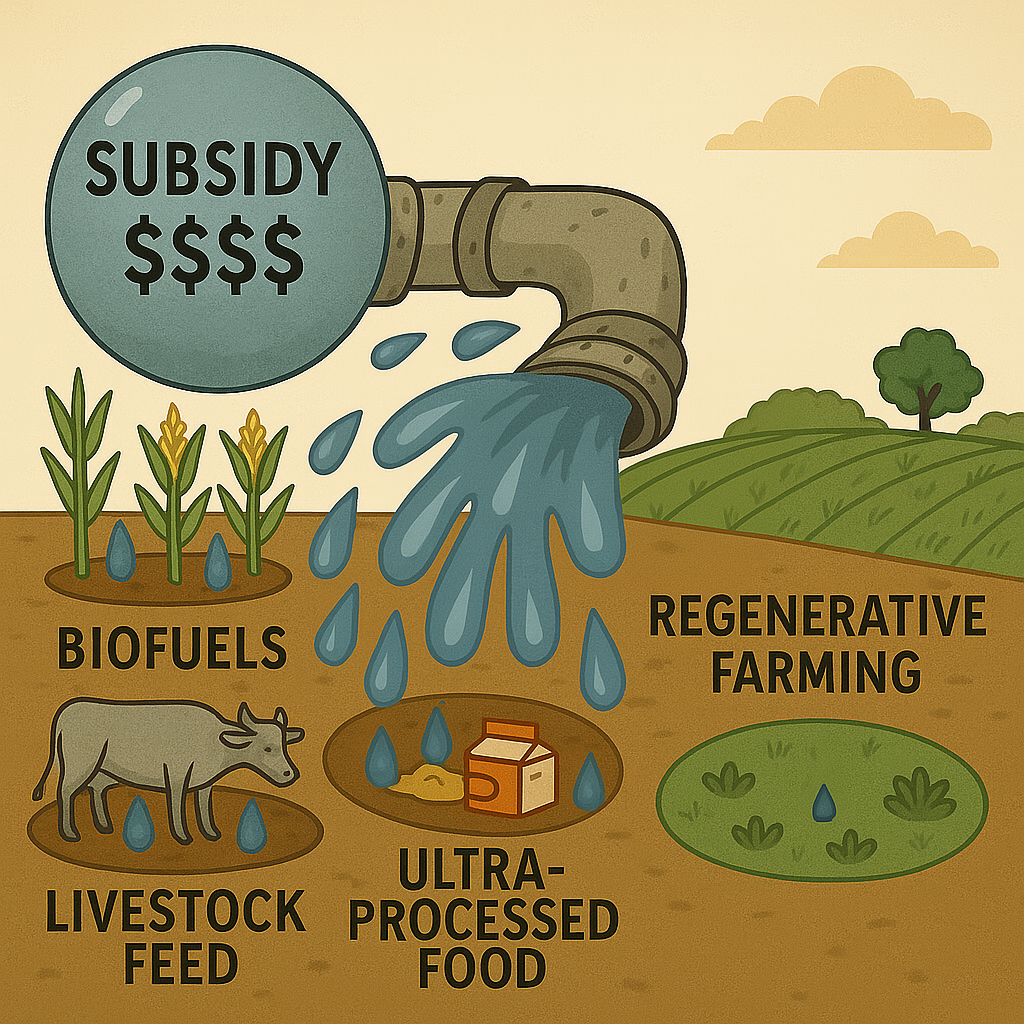Subsidizing the Wrong Harvest: Why Farming Funds Don’t Always Feed People
If everyone needs food, why do farms need subsidies? It’s a fair question and the answer reveals a serious misalignment in how governments allocate public funds.
The uncomfortable truth of agricultural subsidies: 98% go to everything but real food.
Globally, between $635–700 billion is spent on agricultural subsidies each year. However, instead of promoting food security or supporting small farmers, this money disproportionately benefits large agribusinesses. According to a 2021 UN report, almost 90% of farming subsidies are harmful to health, climate, and equity, fueling ecosystem destruction and widening inequality (The Guardian, 2021).
Despite the rationale that subsidies stabilize food prices, most of the subsidized crops don’t feed people directly. In the U.S., 70% of subsidies go to the top 10% of farms, many of which are massive operations producing livestock feed or fuel crops, not food for people (EWG Farm Subsidy Database). The EU mirrors this imbalance: 80% of Common Agricultural Policy (CAP) payments are captured by just 20% of recipients, including corporate landowners (Common Agricultural Policy).
Despite claims that subsidies help keep food prices stable, most subsidized crops, like corn and soy, are turned into biofuels, livestock feed, or ultra-processed food. As the World Bank stated at COP28, such practices exacerbate environmental damage, fueling overuse of fertilizers, deforestation, and greenhouse gas emissions” (Reuters, 2023).
By contrast, regenerative farming, which is designed to protect soil, water, and biodiversity, receives only $11.7 billion in public support globally, a fraction of (less than 2% of) what goes to industrial agriculture (FAO, 2024 via Reuters]. A study in Nature Communications showed that redirecting just half of harmful subsidies to health- and climate-aligned farming could cut emissions and improve nutrition, without reducing yields (Nature, 2021).
To fix the system, three things need to happen:
1. Tie subsidies to climate, soil health, and biodiversity outcomes, not acreage.
2. Support smallholder and regenerative farmers directly with targeted incentives.
3. Challenge the lobbyist-driven myth that all subsidies equal food security.
As the UN succinctly put it: We are paying to destroy our planet and harm our health (Earth.org, 2021).
What would happen if we subsidized clean water and healthy soils instead of corporate profits? It’s time to shift what and who we’re really funding.
If you’re interested in clearer strategies, connect with Mr. G - Galeno Chua and check out Business Sustainability Accelerator, our training ecosystem designed to equip sustainability professionals with the tools, clarity, and credibility to lead confidently in real-world business strategy.
Watch our explainer clip: here
